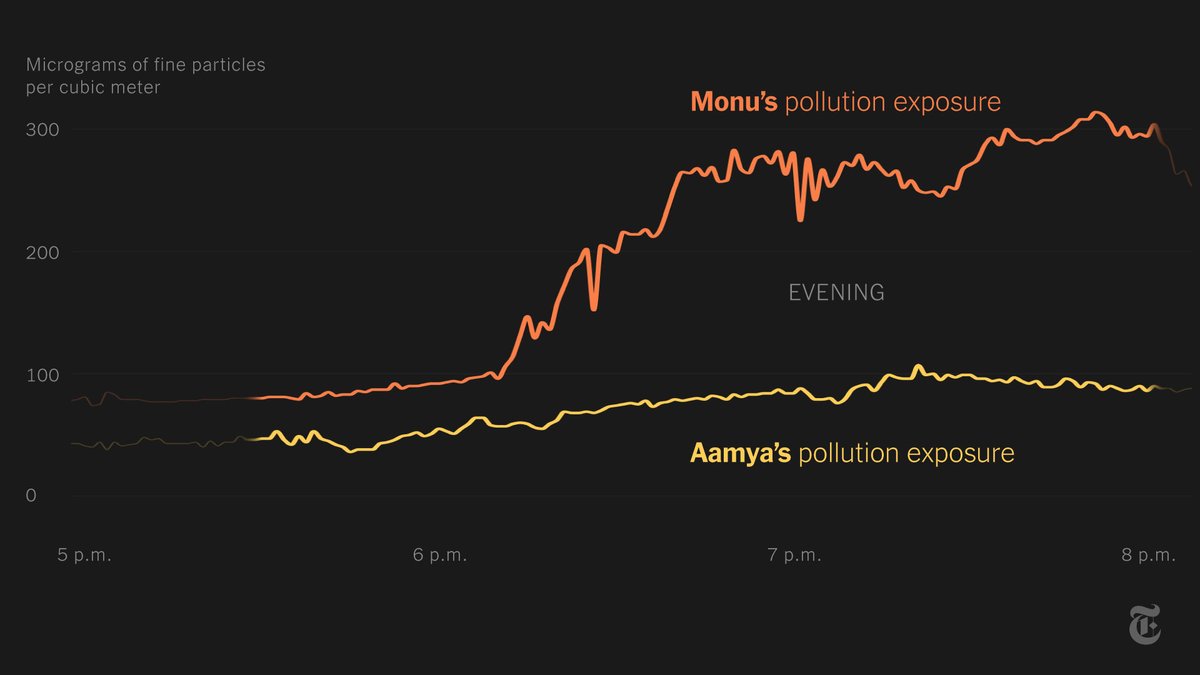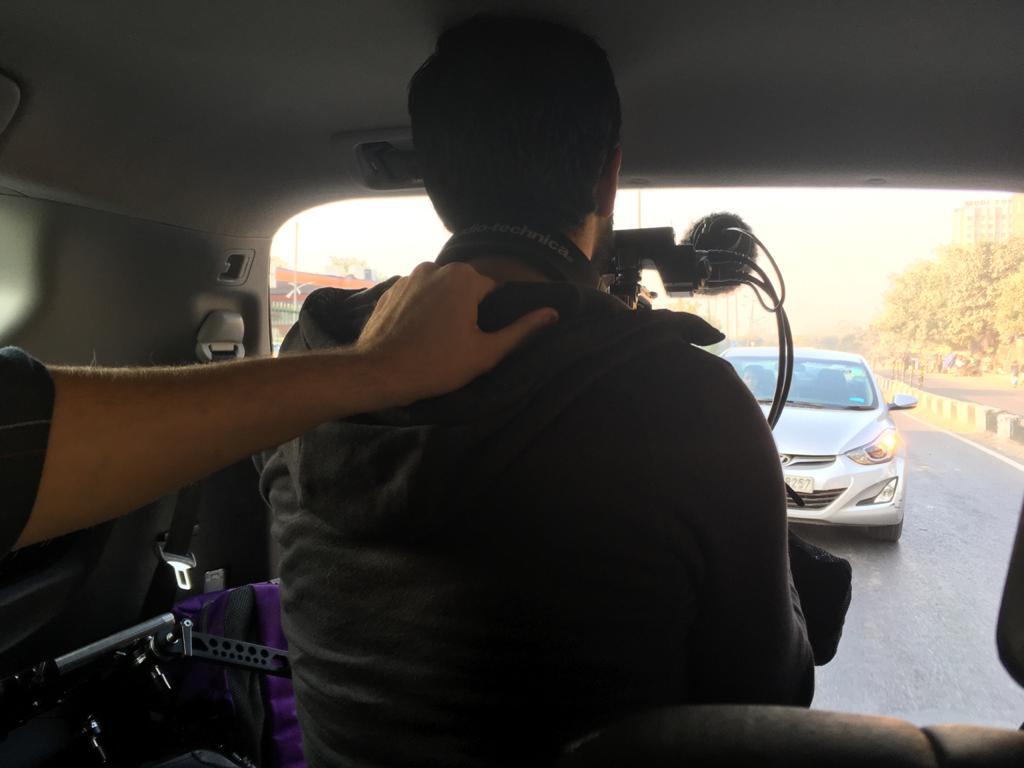Monu and Aamya live in the world's most polluted capital, New Delhi. We @nytimes spent an entire day filming and measuring how much air pollution they breathe to see if money can buy you clean air in Delhi. https://www.nytimes.com/interactive/2020/12/17/world/asia/india-pollution-inequality.html
We arrived with our cameras and pollution monitors early in the morning to see how each kid wakes up and what their exposure to pollution looks like. Monu (left) sleeps in a hut in a slum, while Aamya (right) pops out of her bed with an air purifier whirring in the background.
With every hair in place, we followed them both on their way to school. Monu rides his bike to get to his school, while Aamya finishes her breakfast in the backseat of the family Hyundai. https://www.nytimes.com/interactive/2020/12/17/world/asia/india-pollution-inequality.html
Monu goes to a free school under a Delhi metro bridge with no walls or doors. Aamya's school has air purifiers inside classrooms. Our pollution readings show how Monu is exposed to much more pollution than Aamya, even after leaving behind the wood fires of his neighborhood.
After school, Aamya and Monu are back at their houses, settled in to do their homework. They're still breathing very different air, but as Aamya goes to bed after dinner, the pollution levels inside her purified room also rise. There's only so much machines can do.
Over the course of their day, Monu was exposed to about four times as much pollution as Aamya. A long-term, consistent disparity like that could steal around five years more life from someone in Monu’s position, compared with an upper-middle-class child like Aamya.
Btw, here's how things went behind-the-scenes. That's @dwtkns trying to keep me from flying out the back of our car, while shooting Aamya on her way to school.
This story was a massive team effort! With @jwf825, @dwtkns, @sjwilliams, @shalinivbhagat, @HariNYT, @gettleman, Sidrah Fatma Ahmed, Omar Adam Khan, @leslyedavis, @joshkellerjosh and other amazing humans. https://www.nytimes.com/interactive/2020/12/17/world/asia/india-pollution-inequality.html

 Read on Twitter
Read on Twitter



